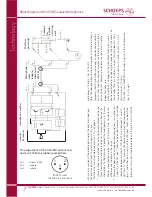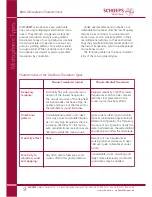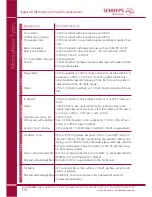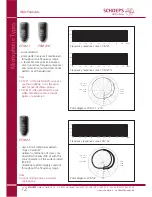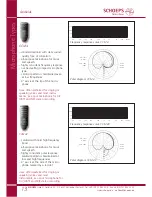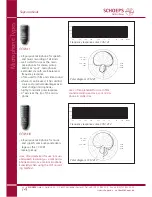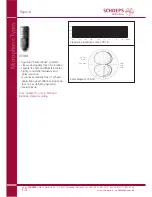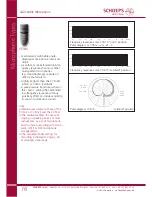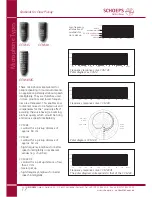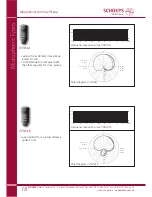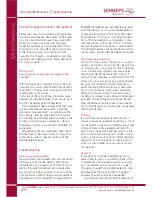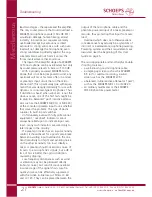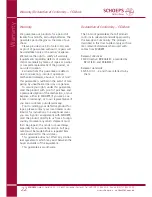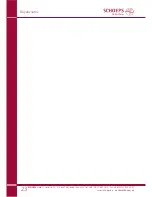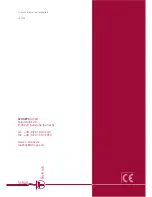
least two stages – the capsule and the ampli fier.
The only sound pressure that could overload a
SCHOEPS
microphone capsule (150+ dB SPL)
would also damage human hearing almost
instantly; in practice our capsules are rarely
over loaded except by explosions or direct
exposure to strong wind. As a rule such over-
load will not damage the microphone; even
strong wind blowing directly against the cap-
sule membrane will not harm it unless the
forces involved are rather enormous.
The input of the amplifier stage of a
SCHOEPS
CCM microphone can be overloaded, but only
by sound pressure levels in excess of 130 dB.
With a properly powered
SCHOEPS
micro-
phone that is not being exposed to wind, any
overloads will occur far more often in a mixer
or preamp's input circuit than in the micro-
phone itself. This is particularly true with equip-
ment that was designed primarily for use with
dynamic or consumer-type microphones. Thus
if distortion is heard when wind, etc. is not the
obvious cause, one of the first tests might be
to plug in a balanced ”pad” (resistive attenu-
ator such as the
SCHOEPS
MDZ 10 or MDZ 20)
at the console or preamp input to see whether
that solves the problem. This type of pad is
superior to built-in pad switches.
Unfortunately, even with fully professional
equipment, ”overload” indicators cannot
always be relied upon to indicate input over-
load – many such indicators are wired only to
later stages in the circuitry.
If a preamp or mixer has an input sensitivity
control, it should be set for a good compromise
between avoiding input overload on the one
hand (sensitivity too high) and avoiding noise
on the other (sensitivity too low). Ideally a
mixer or preamp should not add any noise of
its own to a microphone's signals, but a dB or
two of hiss is better than gross distortion
caused by clipping.
Low-frequency disturbances such as wind
or vibration may not be perceived directly
(subsonic noise), but can still cause overload
in some stage of the signal chain. Low-fre-
quency noise can be effectively suppressed
with the Active in-line low-cut Filters LC 60
and LC 120. They can be placed between the
output of the microphone cable and the
phantom-powered input of a mixer, preamp or
recorder, thus protecting that input from over-
load.
Overload which does not otherwise seem
to make sense may actually be a symptom of
incorrect or inadequate microphone powering.
Powering systems and their requirements are
discussed near the beginning of this User
Guide on page 5.
The most appropriate and most helpful trouble-
shooting tools are:
– a well-known good microphone cable
– a simple pop screen such as the
SCHOEPS
B 5 (or for outdoor recording, a wind
screen such as the
SCHOEPS
W 5)
– a balanced, in-line resistive attenuator (”pad”)
such as the
SCHOEPS
MDZ 10 or MDZ 20
– an ordinary multimeter or the
SCHOEPS
PHS 48 phantom power tester
SCHOEPS
GmbH · Spitalstr. 20 · D-76227 Karlsruhe (Durlach) · Tel: +49 (0)721 943 20-0 · Fax: +49 (0)721 943 2050
www.schoeps.de · mailbox@schoeps.de
Troubleshooting
21
Miscellaneous

